The “Swissness” project will contribute to this structural change currently experienced by Swiss watchmaking. In the future, at least 60% of the cost price of a “Swiss made” product must come from Switzerland. This new standard extends to the production of all the parts of a watch. Although the major Swiss manufacturers welcome the project, some entry level watch manufacturers have taken a stance against it in order to continue to procure a large share of their parts abroad. To keep the “Swiss made” label, they will have to use Swiss subcontractors. Given suppliers’ current backlog, an increase in demand could cause a significant increase in delivery times and the price of components. “Some manufacturers will be forced to invest heavily in their in-house production capabilities,” forecasts the study. The trend towards vertical integration of production should thus be strengthened, particularly in the area of outer casing. But rising costs and investments could, in the aftermath, result in an increase in the price of the final product, synonymous with loss of competitiveness for the relevant brands against foreign, and especially Asian, manufacturers.
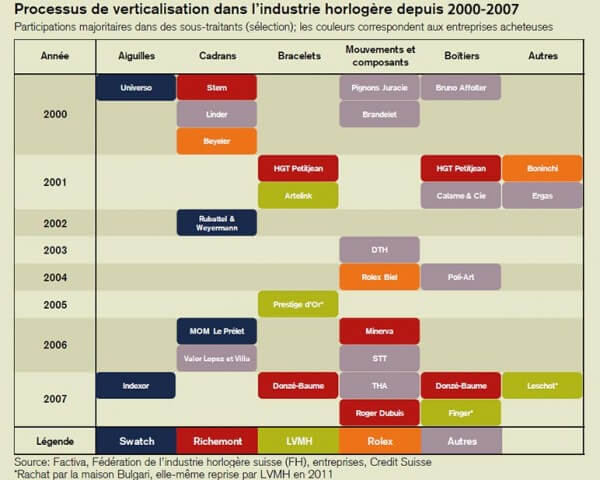
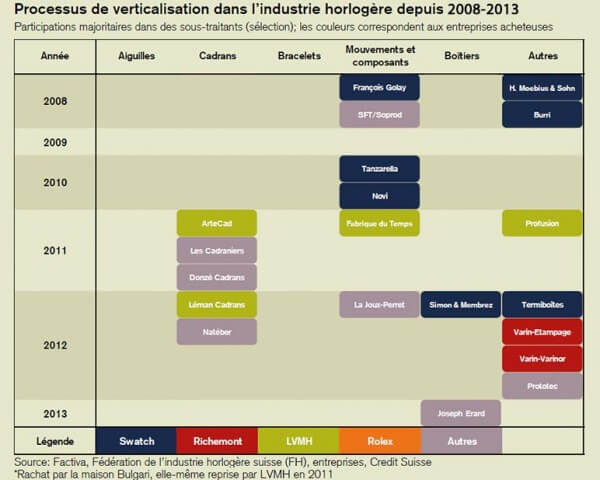
Distribution represents another challenge for small manufacturers. For obvious cost reasons, they are struggling to follow the trend in another form of vertical integration initiated by large groups that have the capacity to open outlets in their own name in the most prestigious locations. Smaller players are also penalised with respect to retailers that view lesser known brands as a financial risk. In contrast, large groups have far stronger negotiating power allowing them to impose their brand, or even eliminate competition or demand the best positions at the point of sale. According to Credit Suisse, vertical integration does however offer some opportunities. It frees up space in independent multi-brand boutiques, now available for other brands. Other possibilities are the use of agents or concentration on markets where companies maintain good personal contacts. So much for the theory. Because, in practice, most small independent manufacturers will tell you that it is increasingly difficult to find a place in the sun. More than ever, size and financial strength are a key competitive advantage.
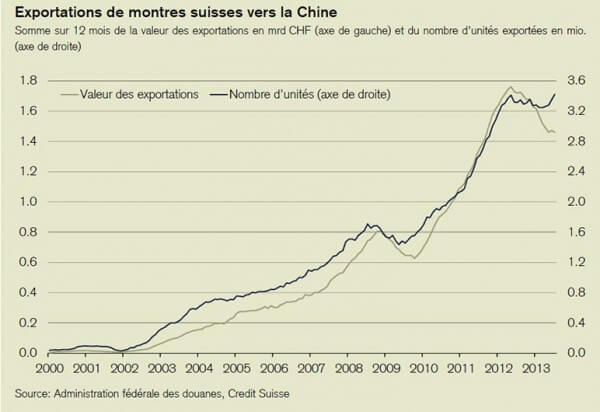
What future for the Chinese market?
We knew that the Chinese market was experiencing a slump. During the first eight months of 2013, Swiss watch exports to mainland China fell 17% year-on-year. Credit Suisse concludes that the market today shows some risks for the watch industry. The sharp slowdown in export growth as a whole is also mainly due to the decline in demand from China. The Middle Kingdom has thus become a negative contributor. The only positive aspect is that the number of watches exported increased by 9%. Demand has therefore shifted as fewer high-end watches are currently heading towards China. The reason is simple, according to the bank: “besides the weakening of China’s economic growth, anti-corruption policy measures and restrictions on advertising for luxury goods weigh on demand.” Given the rapid expansion in recent years, however, CS sees the decline in exports to China as a normalisation rather than a collapse.
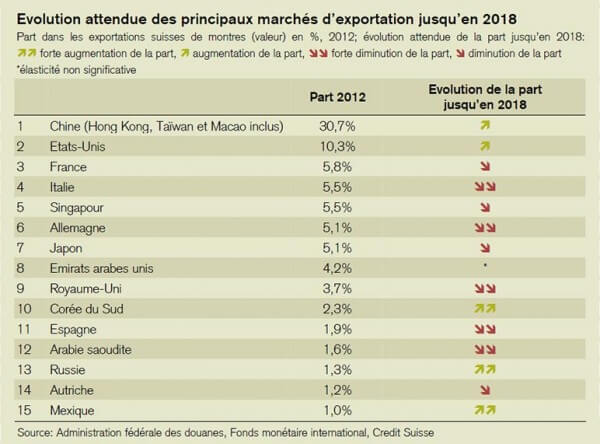
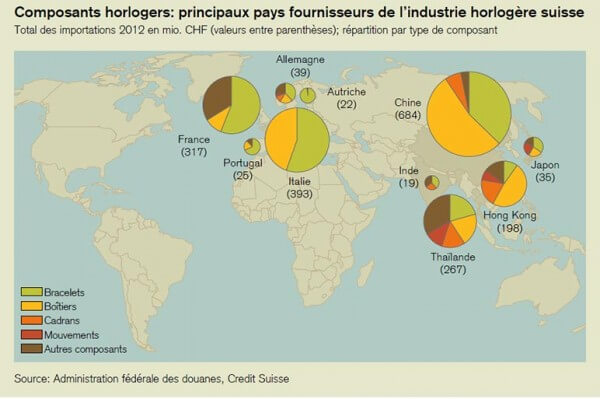
Economists at Credit Suisse believe that in the medium and long term the rapid increase in the standard of living of the Chinese population will more than offset short-term policy measures. China is expected to consolidate its position as the largest export market for Swiss watches in the coming years. The free trade agreement between Switzerland and China will certainly help. Moreover, the population of the Middle Kingdom shows a growing interest in high quality products. But there is a “but”. Due to the growing experience of luxury goods buyers, we should expect a change in buying behaviour. “Some evidence suggests that the preference is currently going to understated styles and rarer small luxury brands. This would also affect the export of watches and change their structure,” anticipates Credit Suisse.










